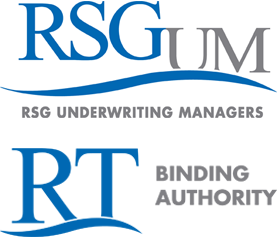Data’s Role at Ryan Specialty Group
by Alex Findlay, Marketing Associate
Data has a growing role in the insurance industry. Its increasing importance is embraced at Ryan Specialty Group (RSG), as evidenced by our expanding actuarial department. I sat down with John Devereux, Chief Actuary for RSG, and the other actuarial team members to catch a glimpse of data’s role at Ryan Specialty Group.
Data as an Asset
Data’s role at RSG is “critical,” says John Devereux. “We’re starting to think about data as an asset…that can either be leveraged or lost.” RSG is a relatively young organization, having been founded in 2010, but the company has its own data that is used to look for “trends and relationships among factors,” according to John. RSG uses tools such as “predictive models to select and assign values relevant to rating variables and dynamic modeling or simulation tools to evaluate options and find solutions where a static model would fall short,” says John. RSG goes beyond its own data by using industry or third party databases to “attach to or associate with the risks [RSG] looks at to help evaluate risk pricing and selection,” adds John.
“Fundamentally, data can lead a decision maker to evaluate the best possible options, increasing the clarity of potential outcomes of various decisions,” says Stan Bogatine, Actuary for RSG. Data allows underwriters to differentiate between risks and provides insight to help underwriters decide “when to be aggressive and go after business and when to let bad business go.” The goal of the actuary is to provide the underwriter with an accurate view of risk by “maximizing the data available and any insights that can be drawn from the data,” continues Stan.
Collaboration across Units

Actuaries at RSG treat underwriters as their professional business partners.
According to Brian Alvin, Actuarial Director for RSG, actuaries look at insurance from a data and analytical perspective, while underwriters approach insurance from a business and individual risk assessment perspective. “At RSG, the collaboration and effective communication between these two perspectives leads to sound business and underwriting decisions,” says Brian. “The insurance market and underwriting of risks have been around for hundreds of years, but the advancements in data and analytics is extremely new,” adds Brian, emphasizing the importance of maintaining strong working and trusting relationships with the underwriters.
“Actuaries who bury themselves solely in the numbers and underwriters who rely on judgment alone will both fall short,” stresses John. Actuaries at RSG treat underwriters as their professional business partners, working to understand their issues and business by asking questions and listening intensely. On the other side, underwriters at RSG are willing to accept challenges to their conventional way of thinking and doing business and be open to new tools and technology. “Without exception, there is a great deal of respect, collaboration, and alignment in our objectives across all of our business units, which allows us to move continuously forward,” emphasizes John. “When we combine the results of the analytical tools, the underwriting process, and professional expertise, then we’re capitalizing on all our assets – and we are far more likely to be successful.”
Characteristics and Limitations of E&S Data
“Just as important in recognizing data’s value is recognizing its limitations,” says John. “Exposures are unique in the E&S business, new risks are emerging, and data may be thin and imperfect, and, because of that, experience, judgment, and collaboration are still at the foundation of what we do at RSG.” Compared to standard lines insurance, actuarial analysis in the E&S space often deals with “a limited volume of data or the inherent volatility of the data,” John points out. The low frequency and high severity of claims that characterizes most specialty lines business makes it more difficult to confidently identify patterns and relationships. Because E&S exposures are diverse, it is more difficult “to bucket risks for analyses,” says John. “More data-rich segments such as personal lines can rely much more on pure data mining,” adds Kathy Gu, Actuary for RSG.

Exposures are unique in the E&S business.
“Take life insurance at one extreme,” says John. “There are literally hundreds of millions of data points around mortality. With this kind of data, very powerful analysis can be employed to accurately price life insurance by age, gender, lifestyle, etc. On the other extreme, we have a business that writes Directors & Officers insurance for Fortune 500 companies. By that very definition, available data will be severely limited (i.e., only 500 exposures annually and only a handful of claims) and each of these data points is unique,” admits John.
One of RSG’s main advantages is “the standardization of systems, processes and data” across RSG’s varied Managing General Underwriters (MGUs), allowing RSG “to apply similar techniques across an entire book,” compared to a single MGU or product that would otherwise not have the dedicated resources for this level of standardization, says Kathy. “This analysis usually points to a few aspects in risk selection, quoting, and pricing that we otherwise would not have known.”
Characteristics of an E&S Actuary

John Devereux, Chief Actuary for RSG
“The specialty space is unique and very challenging, which requires actuaries to think outside the box and rely on the team to come up with clever solutions to market problems,” Stan points out. “Each individual has a strong technical foundation, good business sense, and the ability to creatively solve problems, and, at the same time, each of the team members brings unique skills to the team,” says John. “At RSG, each team member has ownership of certain business relationships within the organization and acts as the primary point of contact for support for that group (backed up by the rest of the team). Then each actuary develops expertise in specific technical areas to serve the team and all of RSG’s business partners more broadly.” For example, RSG has an automation lead that specializes in portal development and streamlining technology, a catastrophe modeling expert, a predictive modeling specialist, etc.
“No one person will ever have all the answers, and data alone will not solve any of our problems, and that is why looking beyond your closest team members for answers is overlooking your greatest resource,” emphasizes Brian. “We each have our own expertise, shaped by our prior experiences, and together with our underwriters, we’re positioned extremely well to take advantage of opportunities in the market.
Historically, the role of the actuary has been focused on providing rate indications and setting reserves. “The opportunity to use data, as well as the role of the actuary, will expand as the industry evolves and data takes a larger place in the insurance industry,” says Brian. Actuaries are helping to develop “predictive modeling, machine learning, portfolio optimization, capital modeling, and enterprise risk management,” according to Brian, so having a broad background beyond mathematics is beneficial.
Data’s Increasing Importance
The actuarial team at RSG sees data taking an even greater role in the next 5-10 years. “We’ll be digging deeper into public databases, (e.g., government data, social media),” says John, and there will an increasing reliance on ‘the internet things (IoT)’ – devices that record data that can be used for insurance purposes. For example, certain devices, such as a black box in long-haul trucking that monitors vehicle, driver, and environmental data, can be “matched up against losses for analysis, risk control, underwriting, and rating,” explains John. Some of this technology is already in use in personal auto insurance, but its use will become more pervasive.
“Increasingly, manufacturers are providing insurance as part of a full suite of manufacturing, maintenance and insurance services, because they recognize that the information they have provides an advantage in preventing and assessing risk,” says Kathy. Preventative analytics is “helping drivers drive more safely, workers lift more safely, providing maintenance based on real-time monitoring, and allowing engineers promptly to restore networks,” as opposed to risk assessment at the back-end.
Stan sees data playing a larger role in places in the insurance industry where data may not have seemed relevant. “Overall, you will see more and more insurance decision making processes start with gathering data and data analysis,” says Stan. “Data will not just be at the individual underwriter level”, but will enable chief underwriters and other senior level executives to make better, more informed decisions,” adds Brian.
“While data will never replace the underwriter, it is a valuable tool that successful companies will leverage and unsuccessful companies will drown in,” asserts Brian. “New data sources, data vendors, data tools, are expanding at an exponential rate, and the volume, variety, and velocity of this data is becoming very difficult to manage by everyone, not just those in the insurance industry, but also telematics, social media and wearables, for example,” says Brian. “It will be key to be able to identify credible sources of data that can be used in the underwriting process, and efficient ways for the underwriter to consume that information; collecting as much data as possible and throwing it at the underwriters won’t help anyone.”

Data and its insights are at the fingertips of RSG’s leadership team.
RSG has undergone an initiative over the past year to better store, aggregate, and report on its data with internal data warehouses and partnerships with external data vendors. “Data and its insights are at the fingertips of our leadership team, [enabling] leadership to access, understand our business, and make decisions from our data whether in the office, at an internal meeting, on the road with a potential client, or at dinner with an established business partner,” says Brian. “Data can help inform a decision, quantify an opportunity, and provide confidence in the direction we move forward.”
“Writing insurance profitability is all about the differentiation of your risks…knowing what risks to write, what coverages to provide, and what price to charge,” says Brian. “Having better data and being able to glean greater insights into that data” allows a company to differentiate risk better than the competition. “While RSG as an organization is young, and some of our business units have only been around for a few years, the data we’ve been collecting is very extensive and positions us to understand our business in greater detail than our competitors,” states Brian. To stay ahead of the competition, Kathy adds, “It’s critical for [RSG] to be at the forefront of leveraging this data as [new] technologies arise.”







